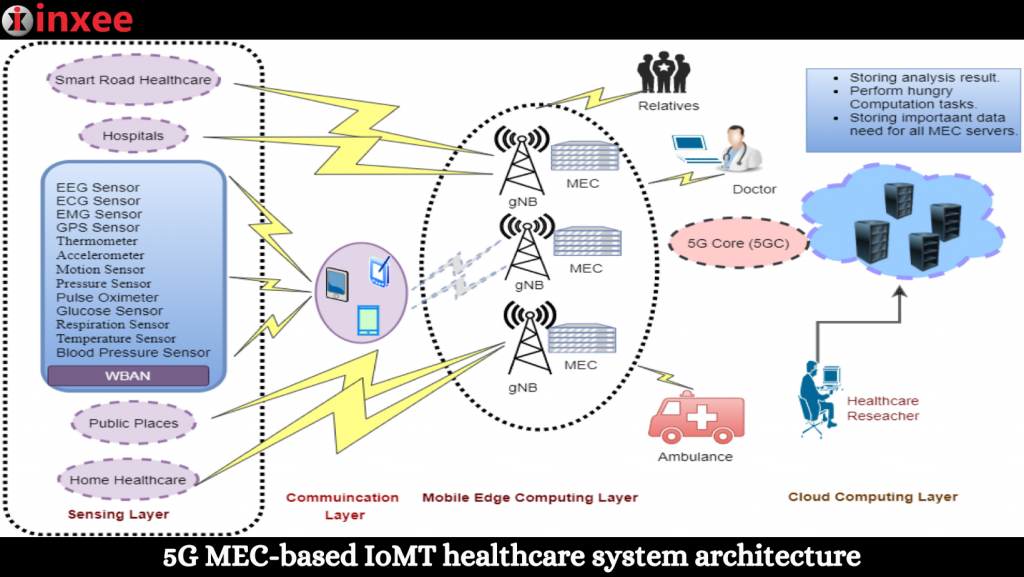5G MEC-based IoMT Healthcare System Architecture
A 5G Mobile Edge Computing (MEC)-based Internet of Medical Things (IoMT) healthcare system architecture combines the power of 5G connectivity and edge computing to enable efficient and real-time healthcare services. This architecture leverages the capabilities of 5G networks and the proximity of edge computing nodes to provide low latency, high bandwidth, and reliable connectivity for IoMT devices. Here is an overview of the architecture:
- IoMT Devices: The IoMT devices consist of various sensors, wearables, medical devices, and monitoring equipment that collect patient health data, such as vital signs, activity levels, and medical images. These devices are equipped with wireless communication capabilities and transmit data to the MEC nodes.
- 5G Network: The 5G network provides high-speed, low-latency connectivity for IoMT devices. It enables seamless and reliable communication between devices and the MEC nodes, ensuring the timely and efficient transmission of healthcare data.
- Mobile Edge Computing (MEC) Nodes: The MEC nodes are located at the edge of the network infrastructure, closer to the IoMT devices and end-users. These nodes provide computing, storage, and network resources necessary for processing and analyzing the data generated by IoMT devices. MEC nodes can be deployed in close proximity to healthcare facilities, reducing latency and enabling real-time data processing.
- Edge Analytics and AI: The MEC nodes host analytics and artificial intelligence (AI) capabilities to process and analyze the healthcare data in real-time. Edge analytics algorithms can perform data filtering, aggregation, and analysis, enabling rapid insights and decision-making at the edge. AI algorithms can be employed for tasks such as anomaly detection, predictive analytics, and personalized healthcare recommendations.
- Healthcare Services and Applications: The processed data and insights from the MEC nodes are used to provide a range of healthcare services and applications. These can include remote patient monitoring, telemedicine consultations, personalized treatment plans, and healthcare analytics dashboards. The MEC nodes facilitate real-time interactions between healthcare providers, patients, and medical devices, enabling efficient and personalized healthcare delivery.
- Security and Privacy: The architecture incorporates robust security measures to protect sensitive patient data. This includes encryption protocols, secure data transmission, user authentication, and access control mechanisms. Privacy regulations and standards are adhered to, ensuring patient confidentiality and data protection.
The 5G MEC-based IoMT healthcare system architecture offers several benefits, including reduced latency, enhanced data processing capabilities, real-time insights, improved patient care, and scalability. It enables healthcare providers to deliver timely and personalized healthcare services, remotely monitor patients, and make data-driven decisions for better outcomes.
Overall, this architecture harnesses the power of 5G connectivity and edge computing to transform healthcare delivery, enabling efficient and advanced healthcare services in the era of IoMT.










Leave a Reply